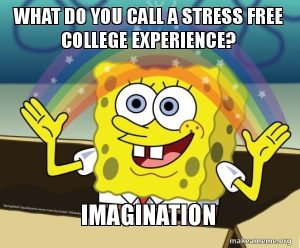Alt Extra Credit
Misinformation: A Quick Primer
The terms “misinformation” and “fake news” are used quite a lot lately, particularly in the past several years. Unfortunately, these terms aren’t always used consistently (by individuals or the media), and can mean different things depending on who you ask.
Think About It!
Based on your own personal knowledge and experience, how would you define concepts like misinformation and fake news? How prevalent do you feel those things are in American society and media today?
Generally speaking, misinformation is simply inaccurate or misleading information. Sometimes this information can be purposefully inaccurate or misleading, and other times it’s created or shared in good faith (but is, nonetheless, still false).
Extra! Extra!
Sometimes people use terms like “disinformation” and “malinformation” to refer to misinformation with a clear intent to deceive. However, intent can be difficult to prove or know, and these terms are often used interchangeably – which can add another layer of confusion to an already complicated subject. For now, we’ll just be using the term misinformation.
It’s probably not surprising to learn that misinformation is nothing new – inaccurate information has been created and spread for as long as human communication has existed. However, you may be surprised at how long many of the forms of misinformation have remained consistent.
Take memes, for instance. If you’ve spent even a day on social media, you’ve likely encountered a meme of some sort. You’ve probably encountered a lot you enjoyed and even shared – and why not? Most memes are funny, cute, and harmless. In fact, the term meme was coined by biologist Richard Dawkins in the mid 1970s (well before the internet existed as the ubiquitous cultural tool it is now) to simply refer to a unit of cultural transmission.

But that same format that allows positive expression and communication can also allow misinformation to spread quickly and effectively. No wonder then that it’s been used for literally hundreds of years:
Check Yourself!
Do you know how to spot a meme that might contain misinformation?
Fighting Misinformation: Debunking and Prebunking
There are two primary approaches to combating misinformation: debunking and prebunking. However, the two approaches have some significant differences.
Simply put debunking involves identifying, analyzing, and disproving misinformation. Arguably the most common form of debunking is fact-checking, either internally within an organization, or externally by an independent body (such as Snopes or Politifact).
The biggest issue with debunking, unfortunately, is that it happens after misinformation has already been published and spread. And as it turns out, false information can often continue to be remembered and believed even after it’s corrected (Newman et al., 2022). This is especially true of political belief and information (Taber and Lodge, 2006; Flynn et al., 2017), with attempts at correction sometimes even making belief in false information even stronger (Bail et al., 2018).
Enter prebunking. Built upon Inoculation Theory, prebunking is a proactive strategy aimed largely at preventing the effectiveness of disinformation. The idea is to offer people tools and strategies that can build a type of mental defense against misinformation, most often before the misinformation is created or shared, thereby “inoculating” them to the negative effects.
Current prebunking tools range from the active (such as online games) to the passive (such as videos).
Extra! Extra!
Creating and spreading misinformation is easier than you might think. Which is why researchers at Cambridge (in collaboration with Dutch media platform DROG) created the “Bad News” game. Click the link below to give it a try yourself!
The Immersive Truth research team has also been developing prototype prebunking audiograms. Watch a few below!
Think About It!
Do you think prebunking ads like the ones above could be helpful in fighting misinformation? Do you feel the effects of this type of prebunking would work better on certain demographics? Why or why not?
In Conclusion: Misinformation and Your Life
So far we’ve given you a very quick summary of misinformation – what it is and how people are trying to fight it. You can find much more extensive information about this topic in the full Immersive Truth E-textbook, found here:
To complete the extra credit assignment, please answer the questions below (there is no word count minimum, but please write as much as you need to express your thoughts). When you submit your responses, you’ll be automatically emailed a copy of your answers at the email you provided. You can use this as proof of completion!
If you have any questions about anything covered here, feel free to contact research assistant Kainan at kainanjarrette@arizona.edu.
Media Attributions
- Spongebob_College_Meme

